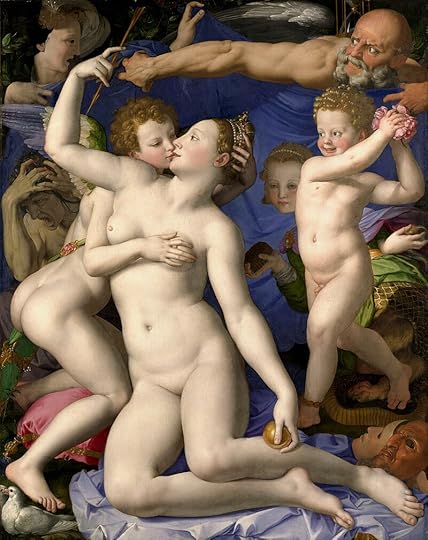What do you think?
Rate this book


272 pages, Hardcover
First published August 16, 2023

In Pontormo's beautiful 'Deposizione' the figures are as if floating in an indeterminate space in such a way that we have more than one perspective: we can look up at the them and look down on them at the same time.
This painting is in the Church of Santa Felicita in Florence.
After all, there is only one noble thing upon this Earth, and that is art. Man is merely a fading stain on a wall.
Jocopo Pontormo - Study - Group of the Dead - Last Judgement